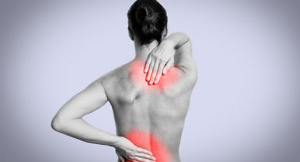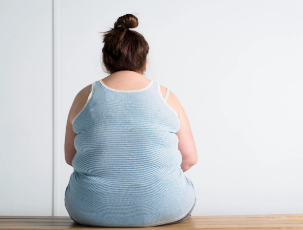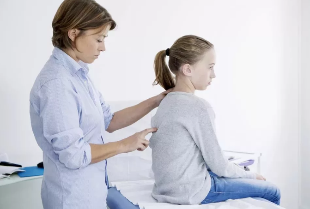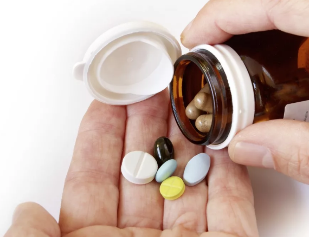Under the osteochondrosis means a degenerative process in the intervertebral disks. Spine downloads the crushing discs, that are located between the individual vertebrae. With time lose their elasticity, and now squeezing the begin and the nerve endings of the spinal cord.

Like any other disease, degenerative disc disease should be treated under doctor's supervision. Next, we describe in detail, what is this disease, why it occurs and what symptoms are characteristic for him.
What is osteochondrosis?
Osteochondrosis – a disease of the spine, which is a degenerative non-degenerative defeat of the intervertebral disc, and then the even tissue of the vertebrae.
Degenerative changes in disc lead to the weakening of its outdoor fibrous rings. Therefore, in patients osteochondrosis often appear such serious complications, as is the protrusion (bulging part of the disc) and the vertebrae hernia (the overhang of the disc nucleus pulposus into the spinal canal).
According to the results of medical research, problems with the spine is experiencing every second person after 30 years. In 70% of cases the cause of pain in the spine is considered to be degenerative disc disease, which refers to the neurological diseases harmful to the ligamentous apparatus of the spinal column.
Like any other disease, degenerative disc disease, cannot arise by itself, nor from that nor from this world, hitting his back a sharp pain. The first signs of degenerative disc disease of the spine manifested not suddenly, gradually.
Depending on the site of pain emit three types of degenerative disc disease:
- Cervical;
- The breast department;
- In the area of the lumbar.
Important! The main complications include degenerative disc disease protrusion of intervertebral disc, hernia of Schmorl's, stiffness of the spine, the pinched nerve roots of the spinal nerves and blood vessels.
Reasons
According to many experts, to carry out the study of this disease, the main cause of degenerative disc disease is incorrectly distributed load on the spine. As a result, patients, directly in the places, which demonstrates excessive physical pressure, there is a change in the patterns of cartilage tissue.
Causes of degenerative disc disease of the spine:
- Hereditary predisposition to the disease.
- The presence of diseases of the endocrine system – disorders of the metabolism.
- The development of orthopedic diseases, such as, for example, flat feet, curvature of the possession of your body, diseases of the musculoskeletal system.
- All sorts of wounds, contusions of the spine.
- Way of life: lack of activity, poor diet with a predominance of fast food meals and junk food.
- The presence of excess weight.
- Harmful habits – smoking, alcoholism.
- Stress, peruutusehdot.
- Pregnancy.

In most cases the causes of degenerative disc disease are associated with the professional activities of a person. At risk groups include professional the category:
- accounting;
- cashier;
- IT staff;
- administrative staff;
- professional athletes;
- drivers of motor vehicles.
However, he noted that the signs of degenerative disc disease much more frequently manifested in women than in representatives of the stronger sex.
Stage of development
The development of degenerative disc disease occurs in 4 of the selected phase (degrees):
Osteochondrosis of the 1st phase
Marks the start of a faulty process in polipozom the core of the intervertebral disc, will lead to dehydration (dehydration) due to the height of the disk is reduced. When this fibrous ring cracks begin to appear. In this stage the patient usually does not feel any changes. Discomfort can manifest in unusual for a person to represent a session, helena active charge.
2 phase
At the second stage, the degenerative disc disease of the continuation of the degenerative changes he sees to eject the disc. Cut slits between the vertebrae, leads to the destruction of the fibrous capsule. In consequence, violates the roots of the spinal nerves, causing the appearance of the point of pain, intensity, which results in slopes, cornering, other movements. Perhaps the appearance of weakness, decreased performance.

3 stages of degenerative disc disease of the spine
Characterized by lubrication of the cartilage of the seal between the discs, thinning of the tissue are well noticeable, if renthenznimky. Symptoms of degenerative disc disease of the spine more pronounced, they have an intense character, and heart attack pain does not pass, and cancel can only strong painkillers.
4 phase
The fourth phase is the most complex neurological abnormalities in the vertebrae of the system, expressed in the partial helena complete restriction of motion of the joints. In such a diagnostic section to provide the condition in the place of the vertebrae compounds are formed by the bony growths (osteophytes) that cause microtrauma of the nervous branches and the downstream segments of the spine.
In most cases, the symptoms of degenerative disc disease of the 4 degree cause pain and discomfort, because your joints acquire a petrified look.
Symptoms of degenerative disc disease in adults
Osteochondrosis – a degenerative-degenerative change (disorder) of the bone tissue of the spine, articular cartilage, ligamentous apparatus and intervertebral discs. In the course of the disease consists of a pathological mobility of the spinal column, which violates the soft tissue, nerve fibers and blood vessels, located near the hearth of defeat – so there is pain.
The main symptoms of degenerative disc disease:
- back pain, cervical region, lower back, shoulders and even on the edges;
- discomfort, stiffness of the back during certain movements, lifting something;
- numbness of the extremities (hands and/helena feet);
- the feeling of pain in the hands and feet, chills;
- muscle cramps;
- disturbances in the functioning of the genital organs;
- headaches, dizziness;
- pain in the region of the heart;
- violation of the sensitivity;
- muscular hypotension;
- increased fatigue, sometimes even the eyes.

Promote the emergence of acute symptomatology may excessive physical strain, overwork, hypothermia, injury, tremor of your body and the effect of vibration.
Complications
Degenerative processes affecting the first thing the intervertebral discs, lead to a reduction of their density, the loss of their cushioning function. The consequence of these changes is excessive movement of the spine affects the facet joints, muscles and ligaments.
Involvement in destructive processes paravertebral patterns cause compression (squeezing) of the spinal cord, its nerve endings. The result is a sick osteochondrosis feels pain, which is, together with the following symptoms and diseases:
- severe headache, migraine;
- decrease in visual acuity;
- partial loss of hearing;
- radiculopathy (sciatica);
- vegetative dysfunction (VSD);
- violation of the functions of the urinary system;
- sciatica (squeezing of the sciatic nerve);
- meziobratle hernia;
- spondiloartrozom;
- lumbago, lumbalgie;
- osteophytes, spondylosis;
- spinal stenosis.
The worst part is that along with osteochondrosis at you begin to appear and other diseases. The thing that gets damaged vascular-nervous bundle, deteriorating blood circulation, as a result – a disease of the whole organism.
Aggravation of degenerative disc disease
In the spring more often occurs deterioration of the lower divisions of the spine, in the winter aggravates the thoracic department. The deterioration can be when the weather changes, stress, physical exertion. During exacerbation of the disease prescribe analgesics, topical ointments, medications, removing the swelling and spasm of the muscles. Applying diuretics in severe swelling, but at the same time it is necessary to apply the medication of sodium and potassium.
Diagnosis
The diagnosis of degenerative disc disease is based on the following methods:

- The collection of medical history — is to examine the complaints of the patient and detects the time of occurrence, causes, duration, features, manifestations of the disease.
- Physiological examination:
- the diagnosis of the possession of your body, gait, range of motion of the patient;
- he studied the skin of the veil for the detection of sites of redness, peeling, a rash;
- palpable painful stretches for the determination of the local temperature, the presence of edema, muscle cramps, seals;
- for the detection of the site of the irradiation of pain is performed the drums with your finger helena with a special hammer;
- so the needle helps to determine pain sensitivity.
Instrumental methods of diagnosis of degenerative disc disease:
- X-ray diagnosis plays a key role in this disease. Conventional radiography allows to detect such symptoms of the disease, such as narrowing of the gaps between the vertebrae.
- Magnetic resonance imaging (MRI) – a method of research, allowing to carry out accurate diagnosis occurring in the area of the spinal processes. With its help, in particular, it is possible to determine the presence of grimestone disk and its localization.
- Computed tomography (CT) is similar to its diagnostic performance for MRI. The disadvantage of CT is the availability of the radiation burden during the examination.
How to treat osteochondrosis of the spine?
There is some particular and only correct method of treatment of degenerative disc disease – this process at all times provides comprehensive access. If the doctor says otherwise, he should think about his professional qualifications and think about finding another expert.
A comprehensive program traditionally includes the below components:
- physiotherapy methods of exposure;
- special exercises and massage;
- techniques of manual therapy;
- treatment treatment;
- reflexology, electrophoresis, etc.;
- traction.
Recommendations in the treatment of degenerative disk diseases in domestic conditions:
- Refusal of bad habits and a gradual transition to the acquisition of useful habits. Smoking, alcohol leads to convulsions and without pinching of the blood vessels of the dorsal arteries.
- Adherence to the diet — a rejection of fatty and which contain the cholesterol products: eggs, broths, sandpapers birds and pigs.
- Limit the consumption of strong coffee and tea, gradually switch to herbal tea and juices-fresh.
- Choose the right mattress and pillow to sleep, it is advisable to orthopedic.
- Restore normal circulation of the blood in his stiff muscles and discs by massage, self-massage, comprehensive treatment of physical education, compresses, friction, and intake of herbal herbal extracts and alcohol tinctures of herbs.

Medications for degenerative disc disease
Experts in the treatment of this category of patients, prescribe medications, which have the following features: remove inflammatory processes, restore the function of the musculoskeletal system, stimulate the regeneration of tissues of the intervertebral discs and cartilage, prevent the progression of degenerative disc disease.
Treatment of degenerative disc disease, it's about the traditional ways of treatment of many diseases of the musculoskeletal system: name of the NSA for the removal of the inflammatory process in the tissues, chondroprotectors to restore the level of synovial fluid and corticosteroids, if the first two kinds of drugs have proven to be ineffective.
Massage
To get rid of degenerative disc disease, apply a variety of treatments, including massages. It is equipped with many useful features — detachable muscle tone, blood circulation in the area of the spine is stimulated, the intervertebral discs are more durable.
Manual therapy in osteochondrosis of the
Manual therapy eliminates sharp painful feelings, helps to restore the posture of your body. One of the most commonly used methods is visceral therapy. During his venue is made of high quality practice joints, improve the processes of blood circulation, strengthens the immune system. Allows you to announce to the aggravation of various chronic diseases.
LTV — therapeutic physical education
Exercise therapy helena physical therapy in osteochondrosis has a very great significance. So, special exercises to strengthen the muscles of the back contribute to the formation of the muscular corset, which in turn ensures a uniform distribution of the load on the spine. In addition, thanks to regular weight training improves blood circulation and nutrition of tissues, including the intervertebral disc, in a patient arises the right of possession of your body, increasing the amount of movement in the spine.
To therapeutic exercise and gymnastics have brought the expected effect, it is necessary to observe the following rules:
- Exercises at an osteochondrosis it is necessary to carry out regularly.
- All movements must be smooth and slow.
- Breathing should be uniform.
- Attention to the frequency of the heart rate monitor.
- When it comes to discomfort and pain in the muscles and the spine, it is necessary to reduce the amplitude and intensity of movements.
- Gymnastics and exercises you can practice at any time of day.
- Of exercises therapeutic gymnastics and exercises to choose comfortable clothes made of natural fabric.
- Before you start to practise medical gymnastics and exercise need to consult with the attending physician.

Physiotherapy
Helps to effectively fight against the painful manifestations in the places of localization of the faulty process. There are many types of physiotherapy exposure. Most often resorted to the use of magnetic therapy, ultrasonic therapy, as well as exposure to low frequency currents.
The effects of thisprocedure can be so:
- normalization of metabolism in the affected areas;
- increase the body's resistance;
- analgesia;
- improvement of microcirculation in the spine and paravertebral tissues;
- the removal of edema;
- reduction of the inflammatory process;
- improve mobility of the spine.
Of osteochondrosis, as well as any other disease of the spine requires immediate treatment. At the first sign, be sure to contact your podiatrist. Be healthy!































